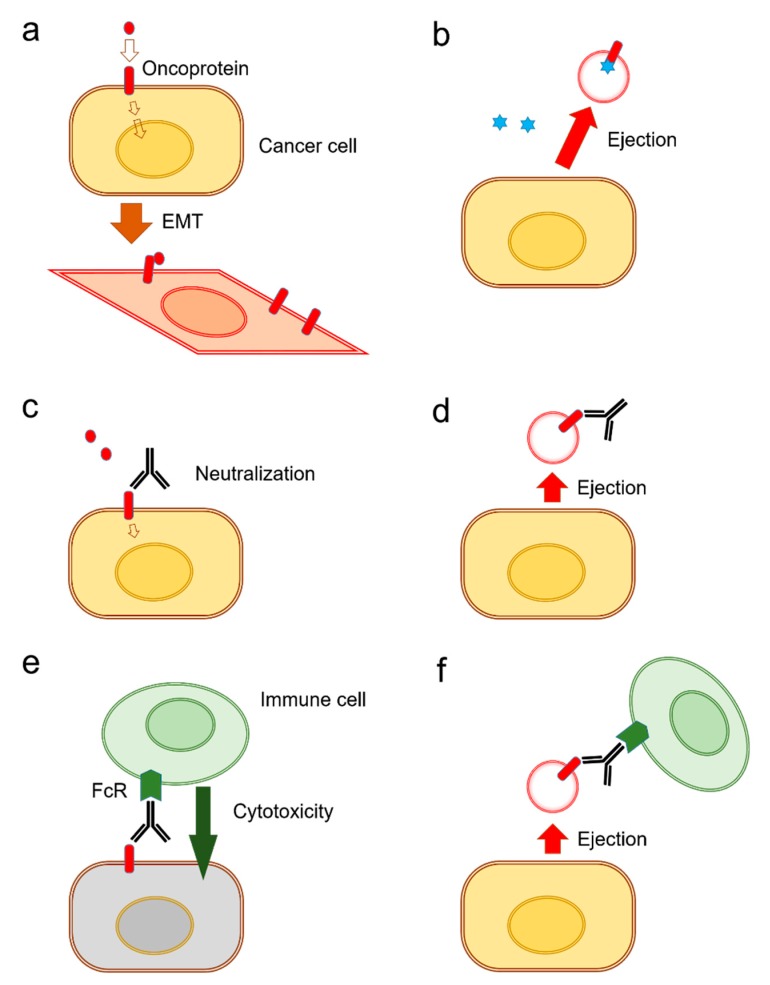Figure 3.
Exosome release mechanisms for the ejection of drugs and antibodies. (a) Cancer cells and CSCs/CICs express oncoproteins, such as mutant or amplified EGFR, whose transmembrane signaling promotes the progression of cancer cells, e.g., EMT [31]. Yellow: a round-shaped cell, before EMT. Red: a diamond-shaped cell, after EMT. (b) Cancer cells can eject molecularly-targeted drugs (blue stars). (c) Neutralization of ligand-receptor interaction is a major mechanism of action of antibody-based agents. Activities of cell-surface oncoproteins can be neutralized and inhibited by host-derived endogenous antibodies and molecularly-targeted antibody drugs [37]. (d) Cancer cells can eject molecularly-targeted antibodies by releasing exosomes that contain oncoproteins as RASP [37]. Meanwhile, cancer cells can further transform and acquire resistant phenotypes. (e) The antibodies are also recognized by FcR of immune cells, including phagocytes and NK cells. (f) Cancer cells can also become resistant to immune cells by releasing EVs.

